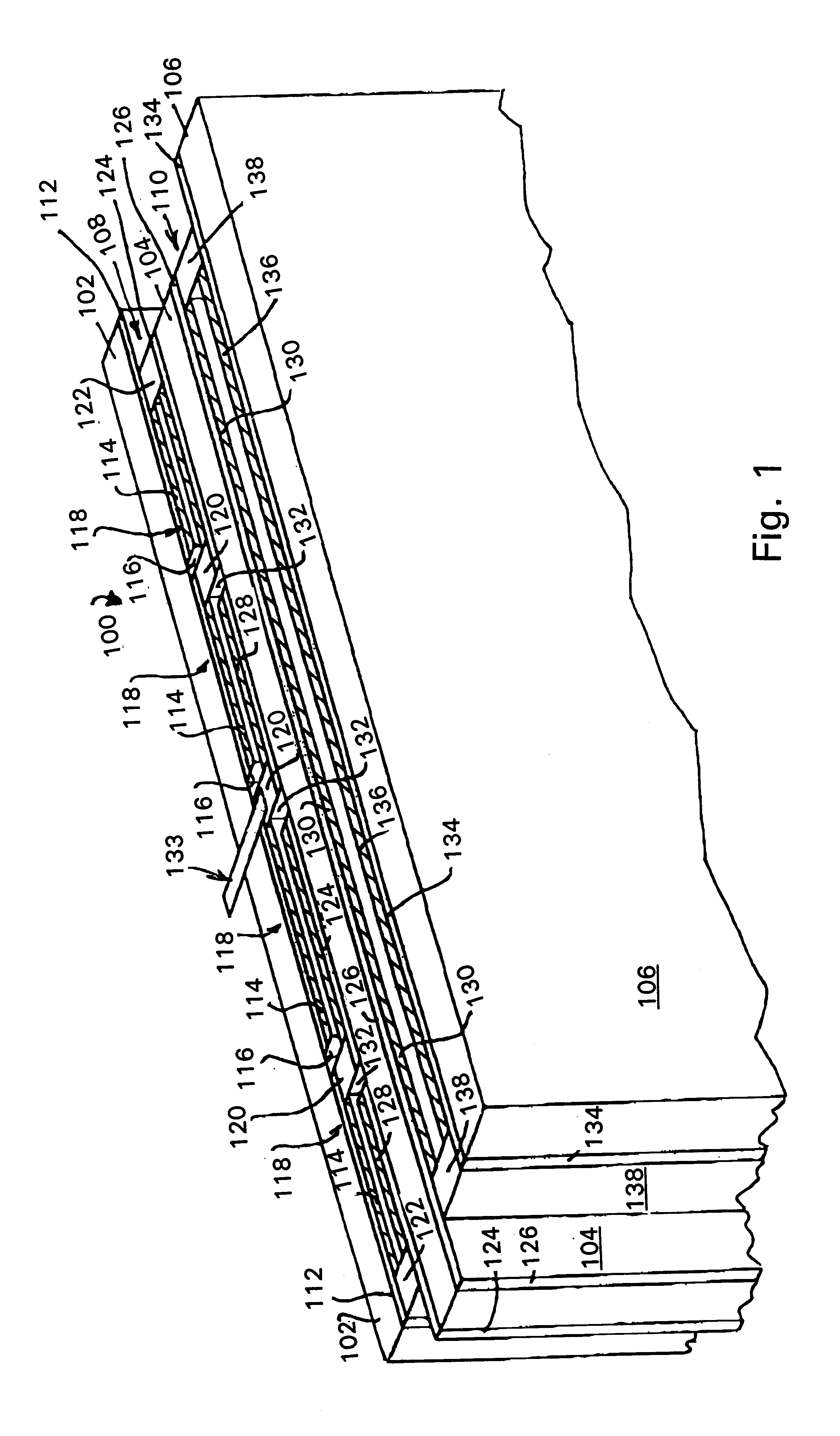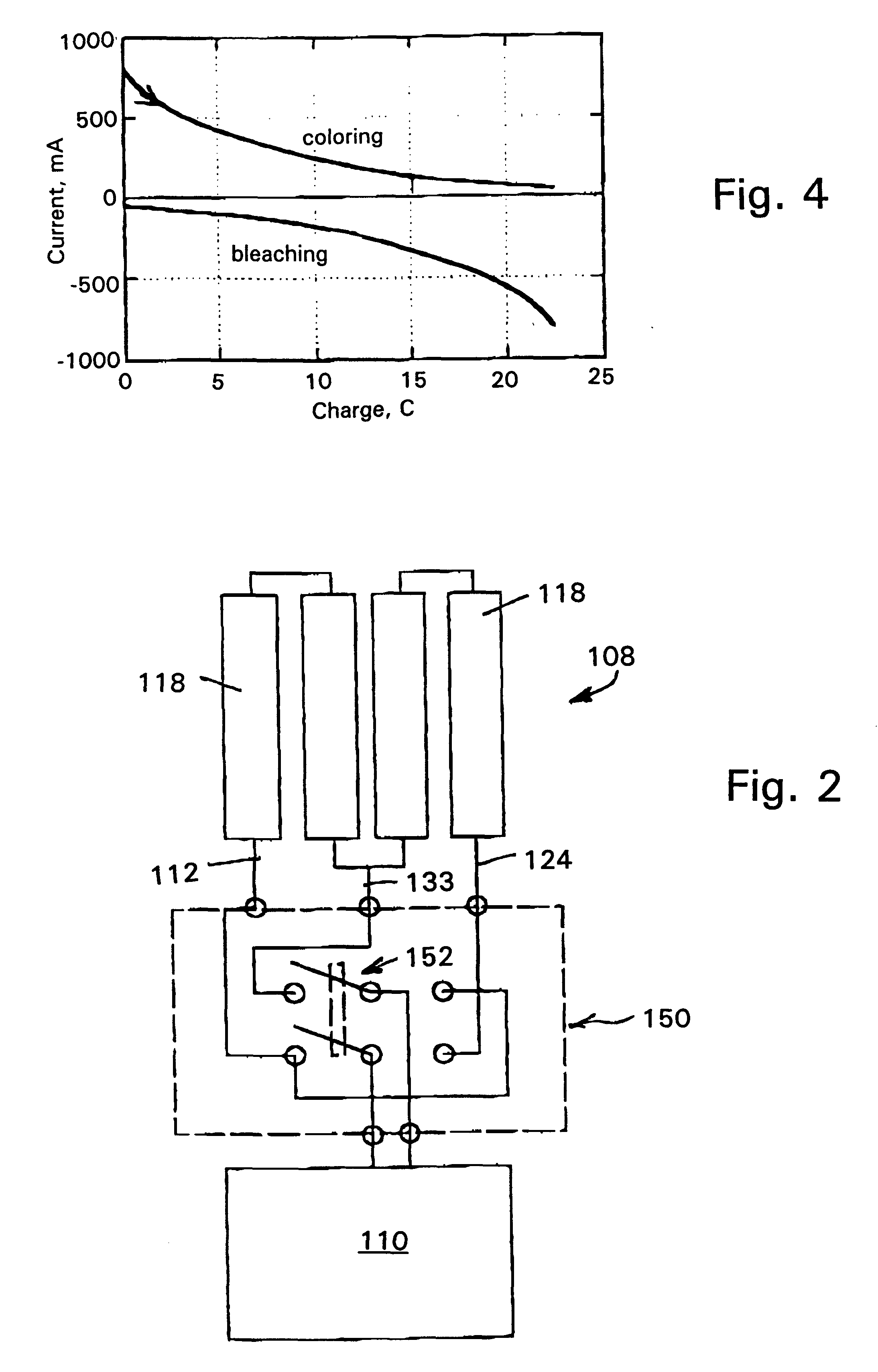Electrophotochromic smart windows and methods
a technology of photochromic and smart windows, applied in the direction of door/window protective devices, instruments, constructions, etc., can solve the problems of inability to make satisfactory electro-optical modulating materials for smart windows, partial and/or excessively slow, and the difficulty of complex pec devices having the necessary clarity, etc., to achieve the effect of improving the switching time of ec cells and less risk of damage to the cells
- Summary
- Abstract
- Description
- Claims
- Application Information
AI Technical Summary
Benefits of technology
Problems solved by technology
Method used
Image
Examples
Embodiment Construction
Having broadly portrayed the nature of the present invention, examples of PEC smart windows and their control means will now be described by way of illustration. In the following description, reference wilt be made to the accompanying drawings in which:
FIG. 1 is a perspective view (not to scale) from above of the top edge of an unsealed and unframed three-pane PEC smart window which forms the first example of the present invention.
FIG. 2 is a block diagram of an example of a simple switch-based control means suitable for use with the window of FIG. 1.
FIG. 3 is a block diagram of an example of a microprocessor-based control means suitable for use with the window of FIG. 1
FIG. 4 is a graph illustrating typical safe charging and discharging profiles for the EC cell of the PEC window of FIG. 1.
FIG. 5 is a diagrammatic sectional elevation of a two-pane smart window that forms the second example of a smart window formed in accordance with the present invention.
The chosen example of a smar...
PUM
 Login to View More
Login to View More Abstract
Description
Claims
Application Information
 Login to View More
Login to View More - R&D
- Intellectual Property
- Life Sciences
- Materials
- Tech Scout
- Unparalleled Data Quality
- Higher Quality Content
- 60% Fewer Hallucinations
Browse by: Latest US Patents, China's latest patents, Technical Efficacy Thesaurus, Application Domain, Technology Topic, Popular Technical Reports.
© 2025 PatSnap. All rights reserved.Legal|Privacy policy|Modern Slavery Act Transparency Statement|Sitemap|About US| Contact US: help@patsnap.com



